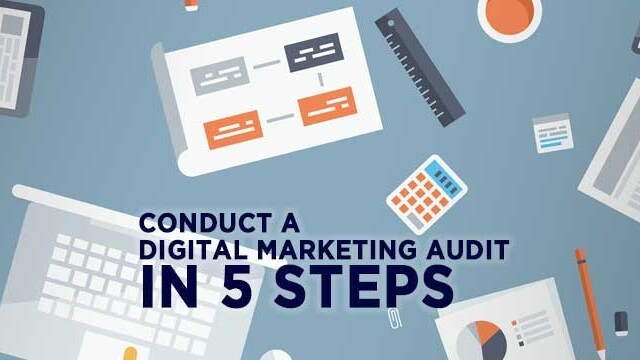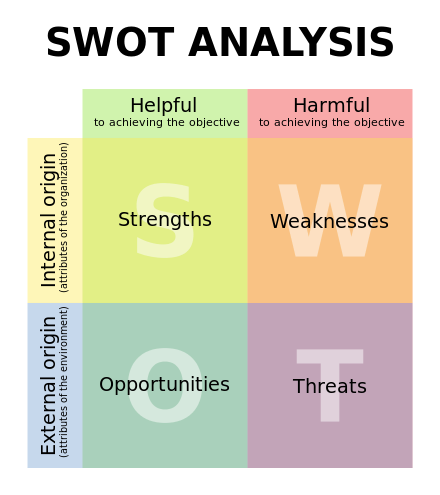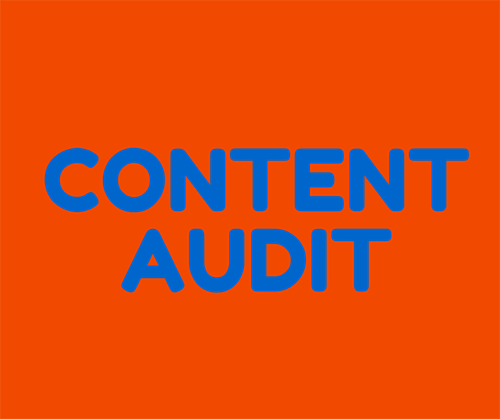
Brian Honigman is a marketing consultant, speaker and freelance writer. For more insights on how to be a better marketer, sign up for Brian Honigman’s weekly newsletter. This post originally appeared on the Digital Current blog.
Legendary historian and documentarian James Burke famously said, “you can only know where you’re going if you know where you’ve been.” He was referring to history, but this quote just as easily applies to marketing. Many marketers that are eager to improve blindly embark on a marketing plan without understanding their current state of affairs.
Creating a marketing plan without performing a proper digital marketing audit can cause you to invest in unnecessary initiatives and to overlook gaps in your current strategy. Many marketers forgo performing an in-depth audit because it can be an intimidating and time-consuming process.
Being so closely involved with your marketing on a daily basis often makes it hard to have an objective idea of where you stand. This article will attempt to outline a plan to help you objectively examine your online presence across multiple platforms and help you optimize your efforts using the latest tactics and best practices.
Big Picture Questions
Before attempting to address specific concerns or areas for improvement it is necessary to take a zoomed out view of your marketing strategy. Focusing on incremental improvements or compliance with best practices will be useless if your overall marketing plan lacks focus or is pointing your organization in the wrong direction.
The questions to be asked in this phase of the marketing audit might seem simplistic, but careful consideration may reveal truths about your business and/or marketing strategy that may have been previously hidden. These questions include:
- What is the current state of our business?
- How is our marketing strategy affecting our business?
- What business goals are we expecting from a marketing overhaul?
- What would success look like?
- How would marketing contribute to that success?
In order to set yourself up for success, you need to define it; and measuring your efforts in detail requires you to clearly define the criteria for success. Understanding the current state of affairs is crucial because the value of all future efforts will be judged according to this baseline.
The next step towards articulating the expectations of your marketing strategy is to have an idea of how marketing will affect your bottom line. At the end of the day, this is the only function of marketing strategy. Understanding how marketing will ideally interface with the business will be necessary for evaluating your current strategy, as well as plotting a course for the future.
SWOT Analysis
Any marketing 101 class will certainly have highlighted this classic evaluation tool. SWOT stands for strengths, weaknesses, opportunities, and threats, and constitutes a simple yet effective way of understanding your business from both an internal and external standpoint.
Once you’ve defined your criteria for success and how your marketing strategy might help you advance these goals, then you can evaluate each component of your organization’s marketing in regards to one of these four categories.
Strengths and weaknesses: These represent the internal state of affairs within your current marketing strategy. This evaluation might consider the current capabilities or competencies of your marketing team, the quality of communication amongst this team, or the accuracy and volume of marketing data you are collecting.
Opportunities and threats: These constitute external factors that might affect your overall marketing strategy. This may involve analyzing market research and determining if the channels you are currently using are trending downward in traffic. For a company well established on MySpace in 2005, Facebook’s ascendance may have been a huge threat. Additional factors to look at are where your competition is placing their efforts and if you can outdo them or find room in that space.
While performing a SWOT analysis, always keep in mind the business insights from the previous step. All these terms are relative judgments and they are based on the ability of your company (both internally and externally) to employ marketing strategies to meet business goals.
Once a SWOT analysis is complete for the marketing strategy as a whole, the next step will be to perform a more granular analysis of the various components of your digital marketing mix.
Search Engine Optimization Audit
Search engines lie at the heart of any digital marketing strategy because they constitute one of the main ways that people discover products and services online. According to a recent report, Fleishman-Hillard found that 89 percent of consumers turned to Google, Bing, or another search engine to inform their purchasing decisions.
Optimizing a website for search is an intricate, in-depth, and lengthy process. This makes any current efforts particularly difficult to audit. However, there are a few key steps for evaluating where your SEO strategy stands and how certain factors that affect search ranking might be improved.
Competitive analysis: The first step to determining the effectiveness of your SEO is to get an idea where your strengths lie. Take stock of the content, keywords, and links currently present on your site and see which of these are working for your rankings. Prioritize those that work and pursue building them out further, while abandoning areas that are not returning as well.
Technical issues: The next step in the auditing process is to determine if there are any weaknesses stemming from flaws in your site’s programming or design. Are there links that lead to nowhere? Content orphaned without links back? Poorly written or outdated content? Identify and remedy any problems you encounter.
On-Page Optimization: Once you’ve identified strategies that work and fixed any glaring errors on your website, now it is time to optimize this content. Here is where investigation of best practices will be crucial. Prime your site to rank well by properly using title tags, meta-data, and keywords.
Link building: After fully optimizing your site and deciding on content that works, employ a link-building strategy to help seize any opportunities that may be present for your site. Seek write-ups on other relevant, well-trafficked pages, and/or produce content on-site that you know your audience will share.
Social Media Marketing Audit
While search may be the primary way people hunt for specific information about products, social media constitutes the main way that people form an impression about a brand or organization. In addition, social media has begun to play a role in how search engines rank results.
However, many brands do not take social media as seriously as they should. Many brands have social accounts that are languishing and forgotten. Some have accounts on different platforms that look like they belong to different brands. Still others have no clearly defined schedule or goals for their social presence. Brands who are guilty of any of the following are in need of a social media reality check. A social audit will address all of these issues and more.
Engagement evaluation: First, take stock of your current social media efforts across channels to determine which of your posts report the highest levels of engagement. This data will show which types of posts appeal to your target audience and point to where your current social media strengths lie.
Profile standardization: The next step is to determine where your social media presence might be lacking, non-existent, or inconsistent with your core messaging. This will also include taking stock of your current resources and abilities to determine how many channels your team is capable of tackling competently.
Best practices and trends: Once you have decided which types of posts work and what channels you will focus your efforts on, research industry trends and best practices for these channels thoroughly. Focus on compiling a social media checklist that can be summarized and shared across your entire team.
Schedule creation: After performing a broad analysis, identifying key channels, and determining best practices, collaborate with your social media team on incorporating the findings from the audit into a comprehensive and detailed social calendar. Each channel should have its own schedule, but they should all interrelate to each other.
Content Marketing Audit
If social and search constitute the current marketing standard, content marketing represents where these two distinct channels come together and where the current trends for digital marketing as a whole are pointing. Publishing high-quality content can dramatically enhance your SEO efforts and having quality content to post is all but necessary for finding success on social media.
It is critical to audit your content marketing to ensure you’re focused on the right goals from the start. Many look for shortcuts to success with content, which can be avoided by understanding how your content performs today and what you want to achieve in the future.
“Don’t look for loopholes to exploit,” said Jesse Noyes, senior marketing director at Kapost.
“Instead, focus on creating quality content and doing it consistently. So many businesses try to game search engines and social networks. They look for some weakness in the algorithm that will get their content seen more often. And, sometimes, this works — for a little a while. But eventually the Google’s and Facebook’s of the world figure it out, improve it, and suddenly that same content is buried or penalized,” he added.
Many organizations either don’t have a clear content strategy, or do not account for the various opportunities for synergy it presents as Noyes pointed out. A content audit will help brands ensure that their current content efforts align with their audience’s expectation and current best practices and that their future efforts take full advantage of content marketing’s potential.
Content consolidation: Many brands might be producing content, but these content efforts are often scattershot. Locate all of the content your brand has produced across channels and decide where this content may be best consolidated.
Audience evaluation: To inform the decision of where to have your content live, do an analysis of the target audience for this content. What demographics does your current content appeal to? Where do they spend their time online? What other kinds of content might they be most receptive to?
Content strategy: Once you have decided which audience and channels to target, work closely with your content team to develop a content strategy and schedule to best capture this audience’s attention. Determine not only where your content will live, but also which types of content would be most appropriate for this channel, and what level of frequency your team is capable of producing.
Content optimization: After creating a robust content schedule the final step is to research multiple ways to optimize this content for each part of the sales funnel (SEO and social distribution as well as conversion and lead generation). Create a comprehensive set of guidelines for your content team moving forward and make sure your existing content is edited to fit these guidelines.
While the prospect of a comprehensive marketing audit might be daunting, the only way you can hope to improve your marketing is to have a solid idea of where you stand. By following these guidelines you should be able to investigate your current marketing efforts methodically and comprehensively and do so in a way that simultaneously informs your future marketing efforts.
How does your organization regularly analyze the state of your marketing efforts and when was the last time you performed an audit? Share your thoughts in the comments below.
Does Your Digital Marketing Strategy Need An Update?
Make it your goal to bring your out-dated digital marketing strategies up-to-date. If you don’t have the time or personnel to deal with auditing your digital marketing strategy on your own, consider hiring a marketing partner with over a decade of experience building high-performing digital marketing strategies that will fulfill your business goals for the year ahead.
Read Next: How to tackle content marketing on a budget
Get the TNW newsletter
Get the most important tech news in your inbox each week.









